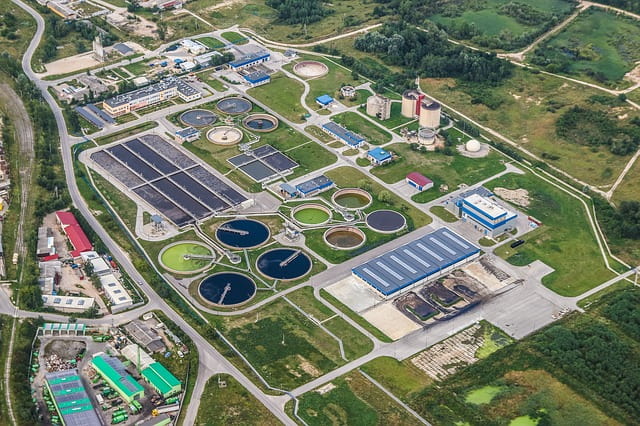In order to comply with strict UK regulations, wastewater needs to be dealt with in a specific way. If not handled correctly, businesses run the risk of doubling their costs because of incorrect wastewater handling.
If wastewater is not treated correctly, there’s a strong risk it could cause substantial damage to our environment. Especially if It contains litter from sewage and other substances that can cause serious harm to the ecosystem.
Read on to find out how to choose the best wastewater treatment system for you.

Table of Contents
1. Types of Waste Treatment Systems
If you’re not able to connect to a public sewer, you generally have three options – a cesspool, a septic tank, or a sewage treatment plant. A cesspool, sometimes known as a cesspit, is a tank that holds sewage. Waste makes its way into the tank where it sits until the tank is full. A lorry will then come and haul it away.
A septic tank, unlike a cesspit, is able to treat the waste that enters it. It’s ideal for small businesses but you will need an area that’s absorbent enough to let the waste seep through. A sewage treatment plant is much more environmentally friendly and is suitable for most households and businesses.
2. Costs of Each Waste System
Consider the cost of your wastewater treatment system. Cesspits can work out to be very expensive. The cost of having a lorry take it away can be up to £300 a time, and this usually needs to be done up to eight times a year. Septic tanks are relatively cheap to install and empty as it only needs to be done once or twice a year. Sewage treatment plants are also fairly inexpensive, but I did find a great option with Castle Water.
3. Size
This completely depends on the size of your house or business property and how many people are there. However, don’t go for one that’s too small. Choose size for how many people will potentially be there, not for how many are there already.
It’s better to overestimate and this will actually save you money in the long run. For example, British Water Flows and Loads recommends if you have an occupancy of three people, choose a treatment plant for five.
4. Legalities
Before you start making plans to install your wastewater treatment plant, there are a few legal requirements you’ll have to follow. First, you need to make sure your treatment plant is legal. All wastewater treatment systems have to be EN 12566-3 2005 approved. If it isn’t, your system will be illegal.
If you want any liquid produced by your system to run off into a stream or a ditch, you’ll need to apply for a license. This essentially means that your wastewater is clean and won’t kill or cause harm to any nearby wildlife.
5. Installation
There are a few important points you’ll need to remember before you start planning the installation of your treatment system. Building regulations means it’s essential that it’s at least seven meters from your property and is a minimum of 10 meters away from any streams or lakes.
A wastewater system is not something to undertake lightly. I’d suggest enlisting a professional to help you out so you don’t make any costly mistakes.




